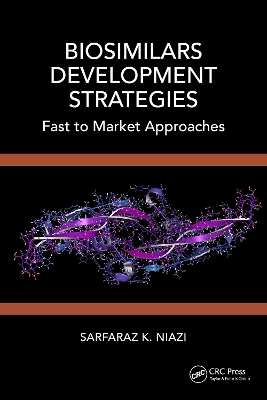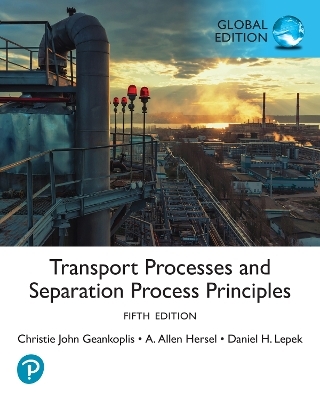
Biosimilars Development Strategies
CRC Press (Verlag)
978-1-032-51701-8 (ISBN)
After 18 years since the first biosimilar was approved, a lot has changed, from the regulatory guidelines to the stakeholder perceptions about the safety and efficacy of biosimilars. However, the development costs remain high, preventing faster entry into markets with more than 200 choices. Analyzing the regulatory filings of all approved biosimilars in the US and EU, a deep analysis of the scientific principles, and continuous challenges to the regulatory authorities have made it possible to plan the development on a fast track. This book teaches how to cut the current time and cost by more than 70%, based on the author's hands-on experience.
Features:
Describes the emergence of biosimilars since the first publication of the recombinant engineering patent, as well as a listing of all approved recombinant products, their patent expiry and their adoption across the globe.
Provides a better understanding of the safety and efficacy of approved biosimilars.
Global approval requires accommodating guidelines and detailed planning to avoid redundancy as well as high costs. The basic expectations of the agencies are presented here.
Presents a detailed analysis of all EU and FDA-approved products with a comparative analysis.
Renowned author and entrepreneur in the field of drug discovery and production.
Sarfaraz K Niazi, Ph.D., is an Adjunct Professor at the University of Illinois. He has authored 60+ major books, 100+ research papers, and 100+ patents, mainly in bioprocessing. He has hands-on experience establishing biopharmaceutical projects, from concept to market, including setting up the first biosimilar company in the US and leading to several FDA approvals. He serves as an advisor to several regulatory agencies, including the FDA.
Preface
Chapter 1 All About Biosimilars
1. Introduction
2. Approvals
3. Future Candidates
4. Approval Guidelines
5. Waivers
6. Appendix: Terminology
7. Appendix 2: Therapeutic Proteins approved by the FDA: potential biosimilar candidates.
8. Bibliography
Chapter 2 Product Type and Selection Strategies
1. Background
2. Exclusivity
3. Formulation
4. Route of Administration
5. Reference Product
Chapter 3 Development Master Plan
1. Introduction
2. Creating a Plan
3. Intellectual Property
4. Expression System
5. Release Specification
6. Nonclinical Testing
7. Clinical Pharmacology Assessment
8. Clinical Immunogenicity Assessment
9. Clinical Efficacy Assessment
10. Extrapolation of Clinical Data Across Indications
11. Interchangeability and Substitution
Chapter 4 Optimization of Cost of Goods
1. Background
2. Creation of Cell Lines
3. Media
4. Containers and Mixing Systems
5. Working downstream
6. Regulatory
7. Ongoing Production
8. Continuous Manufacturing
Chapter 5 Strategic Understanding for Biosimilars Future
1. Introduction
2. The Role of the US Congress
3. The Role of the FDA
4. The Role of Developers
5. The Role of the Associations
6. Conclusions
Chapter 6 Repurposing Biosimilars
1. Introduction
2. Understanding Therapeutic Proteins
3. Reinvention Scope
4. Intellectual Property
5. Artificial Intelligence (AI) and Machine Learning (ML)
6. Structure Prediction
7. Target identification
8. Molecular Docking
9. Drug Conjugates
10. Regulatory Perspective
11. Conclusions
12. References
| Erscheinungsdatum | 10.07.2024 |
|---|---|
| Zusatzinfo | 20 Tables, black and white; 16 Line drawings, black and white; 2 Halftones, black and white; 18 Illustrations, black and white |
| Verlagsort | London |
| Sprache | englisch |
| Maße | 156 x 234 mm |
| Gewicht | 530 g |
| Themenwelt | Technik ► Umwelttechnik / Biotechnologie |
| ISBN-10 | 1-032-51701-8 / 1032517018 |
| ISBN-13 | 978-1-032-51701-8 / 9781032517018 |
| Zustand | Neuware |
| Informationen gemäß Produktsicherheitsverordnung (GPSR) | |
| Haben Sie eine Frage zum Produkt? |
aus dem Bereich


